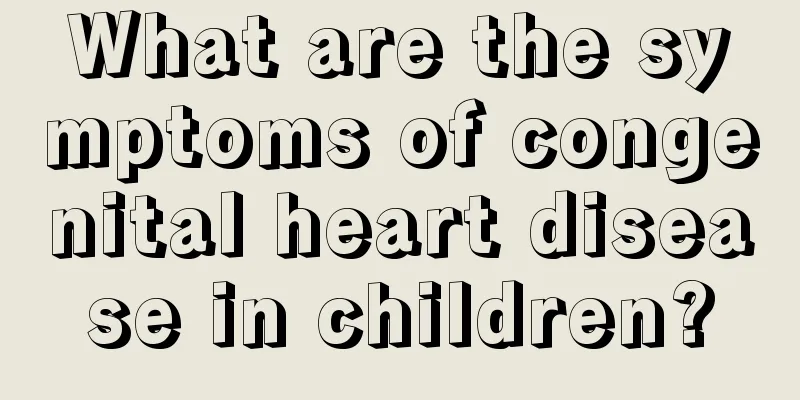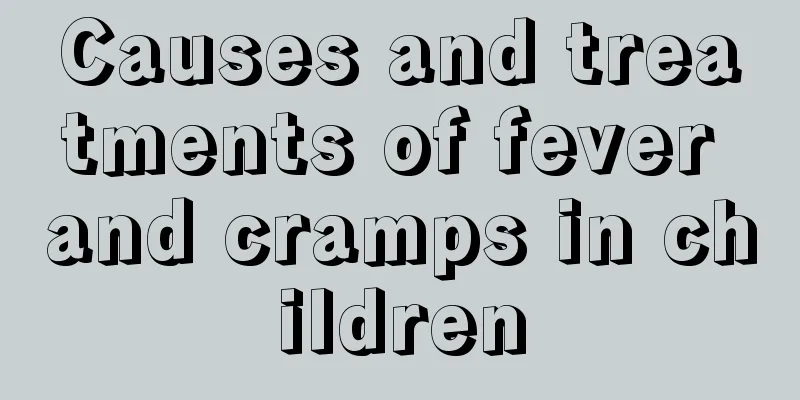What are the symptoms of congenital heart disease in children?

|
We all know that congenital heart disease is very harmful. If it is not discovered and treated in time, it can easily endanger life safety. But heart disease is not like skin disease, where symptoms are visible on the surface of the body. Children are prone to delaying the best treatment time because they cannot express their symptoms clearly. As parents, we must always pay attention to our children's physical condition to avoid tragedy. So what are the symptoms of congenital heart disease in children? 1. Cyanosis: Cyanosis is a prominent manifestation of cyanotic congenital heart disease (such as transposition of the great vessels, tetralogy of Fallot, etc.). It may persist after birth or become gradually apparent three to four months after birth, and is most obvious on the lips, nail beds, and tip of the nose. 2. Heart murmur: Heart murmurs can be heard in most congenital heart diseases. This murmur is loud and rough, and in severe cases may be accompanied by chest tremors. Heart murmurs are often discovered by doctors during consultation. Some normal children may have physiological murmurs. 3. Poor physical strength: caused by poor heart function, insufficient blood supply and lack of oxygen. 4. Susceptibility to respiratory tract infections: Most congenital heart diseases are prone to repeated respiratory tract infections due to increased pulmonary blood flow. Repeated respiratory tract infections further lead to heart failure. The two are often causal and become the cause of death of congenital heart disease. 5. Heart failure: Neonatal heart failure is considered an emergency. Most of the time, it is due to severe heart defects in the children. Its clinical manifestations are due to congestion in the pulmonary and systemic circulations and reduced cardiac output. The children are pale, breathless, have difficulty breathing and tachycardia, and their blood pressure is often low. Gallop rhythm can be heard and the liver is enlarged, but peripheral edema is rare. 6. Other symptoms: If congenital heart disease includes left atrial enlargement or pulmonary artery compression of the recurrent laryngeal nerve, the child may have hoarse crying, shortness of breath, and cough since childhood; combined with other malformations, such as congenital cataracts, cleft lip and palate, and congenital idiocy; ventricular enlargement may cause bulge of the precordial area and chest deformity; persistent cyanosis may be accompanied by clubbing of the fingers, which usually develops 1 to 2 years after the onset of cyanosis. There are always mistakes in hospital examinations, so when you find that your child has any of the above symptoms, parents who are worried about their children must not panic. We will only know the result after a careful examination in the hospital. No matter what the physical condition of the children is, parents should give them more care, not only physically but also mentally. |
<<: What symptoms will children with congenital heart disease have?
>>: How to judge at what age children start learning to speak?
Recommend
Why do children's eyes shed tears?
Tearing tears is very common. Many people are pro...
What is the cause of the child's foot pain?
There are many reasons why children have foot pai...
What is the cause of the hangnails on the child's hands?
Many parents let their children play with sand wh...
What to do if red spots appear on the baby's body
What should I do if red spots appear on my baby’s...
What medicine should children take when they have a cold and fever?
If a child catches a cold and has a fever, you sh...
Case presentation of renal cyst in children
In our daily life, health care is increasingly va...
What are the symptoms of neonatal asthma?
Nowadays, many newborns suffer from asthma, which...
When is the best time to take deworming medicine for children?
Deworming medicine is a special medicine for para...
Why does a child's hair grow slowly?
Everyone's hair grows at a different rate. So...
Two-year-old baby swallowed the date pit
Red dates have many benefits, including nourishin...
Newborn baby has red spots in the eyes
When a pregnant woman is giving birth, she can ch...
What to do if children’s hair is dry and frizzy? This can alleviate
Generally speaking, if a child's hair appears...
Why does the baby's bottom turn red?
The baby's skin is always so tender that peop...
The child is not growing, why don’t you see a doctor? Parents will regret it forever
If your child doesn't grow taller, should you...
What is the situation of a two-month-old baby having less sleep?
In the eyes of parents, the most important thing ...









